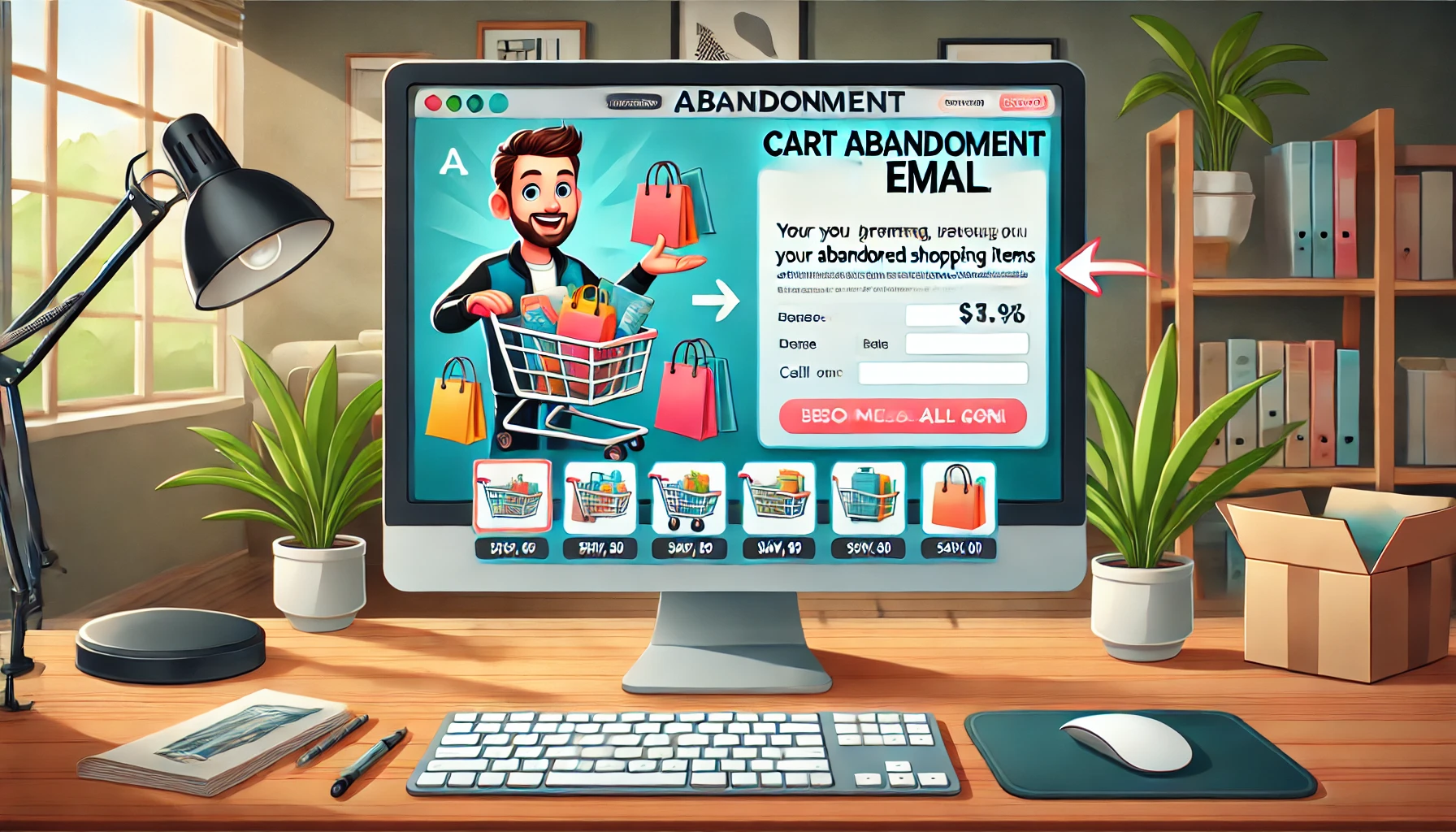Website speed is very crucial for a good user experience, which is why speeding up your site should be at the top of your to-do list.
We’re all about getting things instantly in today’s world and that goes for how quickly websites load too. Search engines and visitors love fast-loading sites and let’s be real, if your site drags and takes forever to load, you’re likely to lose visitors fast. Did you know that Google says about 60% of visitors will ditch a page if it takes more than three seconds to load? And once they leave, they probably won’t come back. That could mean a lot of missed sales if your site is slow.
It’s a no-brainer—making your website faster is a must for any business.
But, what exactly do we mean by ‘page speed’? And why should you care?
In this post, I’m going to walk you through what page speed is, why it matters and I’ll share seven straightforward ways to make your website faster and help you convert more visitors into customers.
What Exactly Is Page Speed
Page speed is basically how long it takes for your web page to be completely visible on the screen.
Sounds simple, right?
Well, it’s a bit more complex than that. Because a web page loads different elements in various ways, it’s tough to pin down an exact number for overall website speed. That’s why it’s important to choose a site speed tool you trust to measure your site’s speed and stick with it.
The Importance of Page Speed
I’ve already mentioned how crucial website speed is but let’s dive a bit deeper into why it’s such a big deal.
So, why is a speedy website so important? Well, both search engines and users expect your website to load quickly. Think back ten years—a lifetime ago in the world of SEO—when Google first announced that website speed was a factor in how they rank websites. That’s still true today.
Actually, it’s even more critical now. With Google’s focus on mobile-first indexing, how fast your pages load has become increasingly important. Sure, website speed is just one of the roughly 200 factors Google considers for SEO rankings but it’s a significant one. There was this study by Backlinko that looked at 1 million Google search results and guess what? They found a strong link between fast websites and higher rankings in Google.
And remember how I mentioned that slow websites have higher bounce rates and lower conversion rates? Yes, that’s a big deal. If your site is slow, people are more likely to leave without interacting with your content or buying your products.
If you haven’t started optimizing your site for better speed, now’s the time to get on it. Trust me, it’s worth the effort.
Let’s Take a closer look at how site speed impacts two crucial areas
User Experience
You know how search engine results pop up almost instantly? We’ve all gotten used to that speed and now we expect every website to load just as quickly. If a site drags, most of us won’t wait around.
Here’s the thing: the internet is overflowing with sites offering the same info. If your site is slow, users won’t hesitate to hit the back button and check out another site. And guess what? Even a tiny delay—one measly second—can lead to a 7% drop in conversions. That’s huge!
Offering a quick, smooth online experience can keep people on your site longer, making them more likely to buy what you’re selling.
SEO
Did you know that three out of the top four factors that Google uses to rank sites (like time on site, pages per session and bounce rate) all depend on how fast your page loads? These factors are all about how users interact with your site.
If your site takes ages to load, it’s not just the users who will get frustrated—search engines will too. They’ll drop your site lower in the rankings because slow sites give a bad user experience. Imagine if Google kept showing you slow-loading, ad-packed sites with poor content. You’d probably start using another search engine, right?
Since people use search engines at almost every step of their shopping journey, where your site ranks can directly affect your bottom line.
Bottom line? You can’t afford to ignore SEO if you want to succeed online.
The good news is, there are steps you can take to make your website faster, which can boost your conversions and, ultimately, increase your sales.
7 Tips to Crank Up Your Website Speed
Web development is no walk in the park, especially if you’re aiming for a slick design that not only looks good but works smoothly too.
Depending on how much time, money and technical skill you’ve got, you might find it’s worth your while to pay for some expert help with your website speed optimization. Investing in professional services can seriously boost your online sales, lead generation and overall conversions.
But if you’re feeling up to the challenge and want to tackle it yourself, here are seven solid tips to get your website running faster.
1. Embrace a CDN (Content Delivery Network)
A CDN or Content Delivery Network, is essentially a bunch of servers spread out across the globe that work together to deliver your site’s content very fast.
Using a CDN can speed up the loading of your site’s content, including HTML, JavaScript and CSS files, images and videos, by storing cached versions in various locations worldwide. This setup means that no matter where your users are, they’re getting data from a server nearby, cutting down on load times significantly.
Several CDNs are out there, each with unique features. Some of the big names include:
- Amazon CloudFront
- Cloudflare
- StackPath
- Fastly
- Microsoft Azure CDN
Picking the right one depends on your specific needs but any of these can help give your site a speed boost.
2. Upgrade to a Better Web Hosting Service
Web hosting is a big deal when it comes to website performance and there are several types to choose from:
- Shared Hosting
- Dedicated Server Hosting
- VPS (Virtual Private Servers) Hosting
- Managed Hosting
- Cloud Hosting
- Colocation
You’re probably most familiar with Shared Hosting. It’s the most budget-friendly option because you share resources like disk space, RAM and CPU with other websites on the same server. This setup is fine for sites just starting out or those with low to moderate traffic.
If you need something faster than shared hosting, consider VPS Hosting. It’s like having your own dedicated chunk of a server. You won’t be affected by the traffic and activities of other sites on the server, making it a solid choice for websites that have outgrown shared hosting.
Dedicated Server Hosting is on the pricey side because you’re not sharing resources with anyone—it’s all yours. This type typically requires you to hire a system administrator to manage the server but it’s worth it for large businesses with high traffic.
Then there’s Managed Hosting—perfect for businesses that don’t want to deal with the technical side of things. The hosting company handles everything from setting up the hardware and software to regular maintenance tasks like updates and monitoring.
Each type has its pros and cons but upgrading your hosting can significantly impact your site’s performance, especially if your current hosting can’t keep up with your site’s traffic.
3. Optimize Your Media Files
Media files like images and videos can really slow down your website because they take up so much space and bandwidth. To speed things up, it’s crucial to optimize these files. Here’s how you can do that:
- Choose the Right Formats: Use PNGs for images since they’re generally smaller than JPGs. For videos, go with MP4 for the best balance of quality and file size.
- Scale for Size: Always serve media in sizes that match the viewer’s screen. There’s no point in loading a huge image on a small device.
- Compress Your Files: This reduces their size without sacrificing quality too much, helping your pages to load faster.
- Trim Your Videos: Keep videos short and sweet. Longer videos take longer to load and can deter visitors.
- Host Videos Externally: Instead of uploading videos directly to your site, use platforms like YouTube or Vimeo and embed the links. This takes the loading strain off your server.
For easier handling of these tasks, consider using some popular optimization tools:
- TinyPNG for images
- Ezgif for GIFs
- Adobe Photoshop for professional image editing
- Camtasia for video editing
- VidIQ for video SEO
4. Minify JavaScript and CSS
Minification is about cleaning up your JavaScript and CSS files. This means stripping out elements that’s not needed like comments, formatting, unused code and optimizing variable names. While it might sound minor, it can make your files smaller so they load faster and consume less bandwidth.
Although minifying your files offers more modest speed gains compared to other methods, it’s still worth doing as part of your overall strategy to speed up your site. Combine it with other tips mentioned here for the best results.
5. Reduce HTTP Requests
Every single thing on your webpage, from images to stylesheets to scripts, makes its own HTTP request. Think of each request like a tiny errand your site has to run. The more errands, the longer it takes for your page to show up fully loaded.
Want to see how many HTTP requests your website is making? It’s very simple to do if you’re using Google Chrome:
Right-click on any page of your site and select Inspect.
When the developer tools window pops up, click on the Network tab.
This will show you a ton of details about what’s loading on your page. To find the number of HTTP requests, just look in the bottom left corner of this tab.
Knowing how many requests your site makes is the first step. Once you have that number, you can start figuring out how to reduce it. This might mean simplifying your design, combining files where possible or cutting down on the number of images and scripts. Each reduction can help your pages load faster, making for a smoother visit for your users.
6. Implement Lazy Loading
High-resolution images are awesome for making your site look good but they can really slow things down by increasing the page weight and using up more memory. While you might think about ditching these heavy images to speed things up, they do add a ton to the overall user experience so you probably want to keep them.
Here’s where lazy loading comes into play as a neat solution.
Lazy loading means your website doesn’t load everything at once. Instead, it loads just the parts that are currently in view on the user’s screen. Everything else waits in line until it’s needed (like when your visitor scrolls down). This method significantly cuts down on initial load times since the browser doesn’t have to load every single image or block of text right off the bat.
This is very handy, especially for those single-page sites packed with tons of content. By implementing lazy loading, you make sure that visitors can start interacting with your site right away without waiting ages for everything to load.
7. Choose the Right Tools to Boost Your Site Speed
There are a bunch of tools out there that can help you figure out how fast your site is and what you can do to make it faster. Choosing the right tool depends on your goals and how deep you want to dive into the analytics. Luckily, there’s something for every budget.
Pingdom
Pingdom is a top-notch tool that’s great for businesses. It offers web performance monitoring and sends you uptime alerts every minute. With Pingdom, you can get detailed insights into your page speed and performance, plus receive alerts via SMS or email if something goes haywire. While Pingdom is a paid service, it does offer a 14-day free trial so you can try it out and see how you like it.
Google PageSpeed Insights
Google PageSpeed Insights is a fantastic free tool for testing page speed. Just pop in your URL and it’ll assess your site’s speed, giving you a score that labels your page as fast, average or slow. It analyzes both mobile and desktop performance and offers suggestions on how to crank up your speed. Since it’s free, it’s a great starting point if you’re new to this whole speed optimization thing.
GTmetrix
GTmetrix is another useful tool that starts off free. It provides a detailed look at your page performance, grading your site from A to F on speed. It also uses YSlow to explain why your page might be dragging. You’ll see metrics like page load time, total page size and the number of HTTP requests made. If you find the free version helpful, there’s also a premium version for deeper analysis.
Each of these tools has its strengths so it’s all about picking the one that best fits your needs and how detailed you want your data. Whether you’re just starting to look into site speed or you’re ready to get into the nitty-gritty, these tools can help you make your site faster and keep your visitors happy.
Boost Website Speed to Ramp Up Conversions
You’ve probably put in heaps of time, effort and maybe a pretty penny too, to make sure your website looks top-notch and truly represents your business. But here’s the kicker: even the slickest website won’t do you much good if it loads so slowly that visitors bounce before they even see what you’ve got to offer.
So, what’s the game plan? Put website speed at the top of your priority list. It’s all about making sure when visitors land on your page, not only does the content blow them away but the speed does too.
People come to your site for the content—they want it and they want it fast. Let’s make sure we deliver it right when they need it, without any frustrating delays.
Feel free to reach out to our web design team at TPM if you need any help with this. We’re here to assist you in making your website as fast and effective as possible!
Frequently Asked Questions (FAQs)
What is website speed and why is it important?
Website speed refers to how quickly a webpage loads and becomes fully interactive. It’s crucial because faster sites provide a better user experience, reduce bounce rates and can improve SEO rankings, which ultimately leads to more conversions and sales.
How can a CDN (Content Delivery Network) improve my website’s speed?
A CDN stores copies of your site’s content on a network of servers around the globe. When a user visits your site, they are served content from the nearest server, reducing load times significantly.
How does optimizing media files help increase website speed?
Large media files can slow down your website. Optimizing these files by compressing them and using the correct formats ensures they load faster without losing quality, improving overall page load times.
What does minifying JavaScript and CSS do?
Minifying JavaScript and CSS involves removing unnecessary characters (like spaces and comments) from the code without changing its functionality. This reduces the size of these files, making them quicker to load and execute.
What is lazy loading and how does it benefit my website?
Lazy loading is a technique where only the content visible to the user is loaded initially and the rest loads as needed when the user scrolls. This reduces initial load times, saves bandwidth and improves user experience on pages with lots of images or videos.












